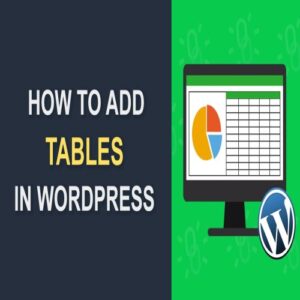We know how frustrating it is to have your website attacked. That’s why we take WordPress security very seriously at LadiTech.
Our products are meticulously tuned to be as secure as possible, in keeping with our serious attitude to security. When it comes to running a website, there are still a few security hazards over which we have no control. To keep your website safe, you, the website owner, must be aware of these potential security concerns.
With that in mind, here are ten steps you can do to strengthen the security of your WordPress site.
1. Make use of safe hosting
Not all web hosting companies are made equal, and hosting flaws are responsible for a large majority of WordPress site hacks.
When looking for a web hosting company, don’t just go with the lowest one. Do your homework and make sure you hire a reputable firm with a proven track record of implementing effective security measures.
It’s always worth paying a little more for the assurance that your website is in good hands.
2. Keep everything up to date.
Patches and fixes for existing and potential vulnerabilities include in every new WordPress release. You could be vulnerable to attacks if you don’t maintain your website updated with the latest version of WordPress.
Many hackers will target earlier versions of WordPress that have known security flaws, so keep a watch on your Dashboard notification area and don’t dismiss those ‘Please update now’ notifications.
The same goes for plugins and themes. Make sure you’re running the most recent version as soon as it’s available. Your site is considerably less likely to hack if you maintain everything up to date.
3. Make your passwords more secure.
Weak passwords are responsible for about 8% of hacked WordPress websites, according to this infographic.
If your WordPress administrator password is anything like ‘legman’, ‘abc123’, or ‘password’ (all of which are far more common than you may think!), you should change it right away.
I advocate creating a solid password recipe for a password that is easy to remember but extremely difficult to crack.
You may also use a password manager like LastPass to remember all your passwords for you if you’re feeling lazy. Make sure your master password is nice and strong if you utilize this strategy.
4. Never use the username “admin.”
Earlier this year, a wave of brute-force assaults were launched against WordPress security websites all across the internet, consisting of several login attempts with the username ‘admin’ and a slew of common passwords.
Your site is extremely vulnerable to a hostile attack if you use “admin” as your login and your password isn’t strong enough (see #3). You should strongly consider changing your username to something less noticeable.
Installing WordPress until version 3.0 automatically established a user with the username “admin.” This was modified in version 3.0 to allow you to select your own username. Many people continue to use “admin” since it has become the industry norm and is simple to remember. Some web providers also employ auto-install scripts that, by default, create a ‘admin’ account.
Creating a new administrator account with a different username, checking in as that new user, then removing the existing “admin” account is all it takes to fix the issue.
If you have posts published by the “admin” account, you can assign all of them to your new user account when you delete it.
5. Remove your username from the URL for the author archive
The author archive pages on your site are another opportunity for an attacker to acquire access to your login.
WordPress displays your username in the author archive page’s URL by default. If your username is joebloggs, for example, your author archive page will be http://yoursite.com/author/joebloggs.
For the same reasons as the “admin” username, this isn’t ideal, thus it’s a good idea to hide it by modifying the user nickname field in your database, as outlined here.
6. Limit the number of login attempts
Limiting the number of failed login attempts from a single IP address can be handy if a hacker or bot is conducting a brute-force assault to crack your password.
Limit Login Attempts offers exactly that, allowing you to determine how many retries are permitted and how long an IP address is locked out after a series of failed login attempts.
Although some attackers will use a big number of different IP addresses, there are ways around this, and it’s still worth performing as a precaution.
7. Using the dashboard, disable file editing
You can update any of your theme files in the dashboard of a typical WordPress installation by going to Appearance > Editor.
The problem is that if a hacker gained access to your admin panel, they could also alter your files and run whatever code they wanted.
So, by adding the following to your wp-config.php file, you may prevent this form of file editing:
Define (‘DISALLOW_FILE_EDIT’, true );8. Try to stay away from nulled plugins and themes
Nulled WordPress themes and plugins are illegally distributed pirated copies of premium WordPress themes and plugins.
People that resell nulled things believe that because WordPress and any derivative works (such as plugins and themes) license under the GPL, it’s perfectly legal to duplicate and distribute them.
While this is true, it frequently comes at a high price. It not only costs money to legitimate WordPress companies, but it also jeopardizes the security and integrity of websites that utilize nulled WordPress themes and plugins.
Yes, nulled themes and plugins are frequently the cause of website hacking.
9. Always have a backup
The necessity of regularly backing up your website cannot be overstated. Many people put off dealing with this until it’s too late.
Even with the finest security precautions in place, you never know when something unexpected will occur, leaving your site vulnerable to an attack.
If this happens, make sure you have a backup of all of your material, so you can quickly restore your site to its former splendor.
The WordPress Codex explains how to back up your site in detail, and if that seems like too much effort, you can schedule frequent automatic backups with a plugin like WordPress Backup to Dropbox.
10. Make use of security extensions
In addition to the procedures listed above, there are other plugins available to strengthen your site’s security and lower the chances of it being hacked.
11. Change WordPress login address
For this page, WordPress sites all utilize the same URL format by default. For example, if your website’s URL is www.mysite.com, you can log in at www.mysite.com/wp-login.php or www.mysite.com/wp-admin.
This makes it simple to recall how to get to your website. The disadvantage is that anyone who understands anything about WordPress may immediately find your login page. Hackers can start trying to break in once they’ve found it. On the other side, if you alter the URL to something difficult to guess, you’ll make it more difficult for the same hackers to find your login page.
Changing your login page URL also has the added benefit of removing a lot of resource-consuming bot traffic from your site.
changing WordPress login address needs to be done by experts, LadiTech experts can help you easily change the login address, for more information contact us.
12. You Shouldn’t Use the Username “Admin”
The first reason having the admin username is undesirable for security is that brute-force assaults can use to break into your system. Hackers employ brute force attacks to try various combinations in order to get access to passwords or private information about users on a website. Because so many people use admin as their password because of its basic structure (admin), these types of hacker attacks are very successful because they have everything they need to get access to a site right away.
13. Disable xmlrpc
The main reason for disabling xmlrpc.php on your WordPress site is that it exposes security flaws and can be targeted by hackers.
There’s no reason to keep XML-RPC running since that it’s no longer required for communication outside of WordPress. As a result, it’s a good idea to disable it to make your site more safe.
However, there will always be website owners who refuse or are unable to update their WordPress version. They will still require access to xmlrpc if they are using a version that predates the REST API.
14. Change source code of WordPress plugins
It is entirely up to you whether or not you want to secure the identity and content of your website. However, bear in mind that hackers are always on the lookout for ways to obtain access to your website’s material, particularly source code, or even people who are merely interested in copying your website’s content and utilizing it without your permission. For changing the source of plugins, you need an expert, LadiTech experts can help you to change the source code of WordPress plugins.
15. Download WordPress from invalid source
Downloading WordPress crm from untrustworthy sources is one of the main causes of WordPress site security issues. Downloading from untrustworthy sources can expose you to a variety of hacking assaults. You can get WordPress by visiting WordPress.org and downloading it.
16. Disable comments on WordPress blog
If you notice that the majority of the comments on your blog are spam, you will undoubtedly feel compelled to block comments on your blog entries. And this is exactly what happens when you run a website that allows visitors to leave comments on your articles. It has the potential to instantly deceive your readers or blog site visitors, resulting in an unpleasant situation.
You may feel compelled to disable comments on your posts, pages, or entire site under certain circumstances. And it’s the only way to stop spam comments, keep your site secure, and protect your brand’s reputation in the short term. So, before you do anything, you should understand the benefits and drawbacks of deactivating blog comments.
17. reCATPCHA is good idea for your forms on WordPress
A bot is a computer program that automates a process through the internet. Though not all bots are malevolent, malicious bots are meant to disrupt or hurt people. For example, a bot may use a contact all form to generate hundreds or thousands of false email list sign-ups, clogging the system and causing you administrative headaches as you try to separate the good from the bad.
If you use the Constant Contact Forms plugin on your WordPress account, the form includes a hidden “honeypot field” that isn’t visible to humans but visible to bots. Constant Contact denies the form submission if the hidden field fill in. The “honeypot field” isn’t perfect, but it does a good job of preventing bogus registrations. Using Google reCAPTCHA adds another degree of security against nefarious bots.
18. Two-Factor Authentication login
To safeguard your WordPress website, you must create a strong password. A password, on the other hand, provides insufficient protection against numerous threats that pose a major risk to your site, such as brute force attacks. You risk losing your website and putting your visitors at risk if unauthorized persons get access to your back end.
You may add an extra degree of security to your WordPress site by using Two Factor Authentication (2FA). It’s easy to set up, and it greatly reduces the chance of unauthorized visitors gaining access to your website.
19. Remove WordPress themes and unused plugins
The primary reason for removing obsolete themes and plugins is security. Therefore, A bad user could find an exploit that uses such unused themes and plugins from a security aspect. Aside from security, deleting unwanted plugins and themes can help in a variety of other ways, including decreasing complexity and confusion when other people work on your site, reducing the size of your backups, and possibly even improving performance.
Any modest enhancement to a website’s performance can and will boost visitor pleasure. In conclusion, This suggests that putting in the effort to improve website performance is worthwhile. Getting rid of old themes and plugins is a simple and quick technique to help with these efforts.
Also read: Website security










